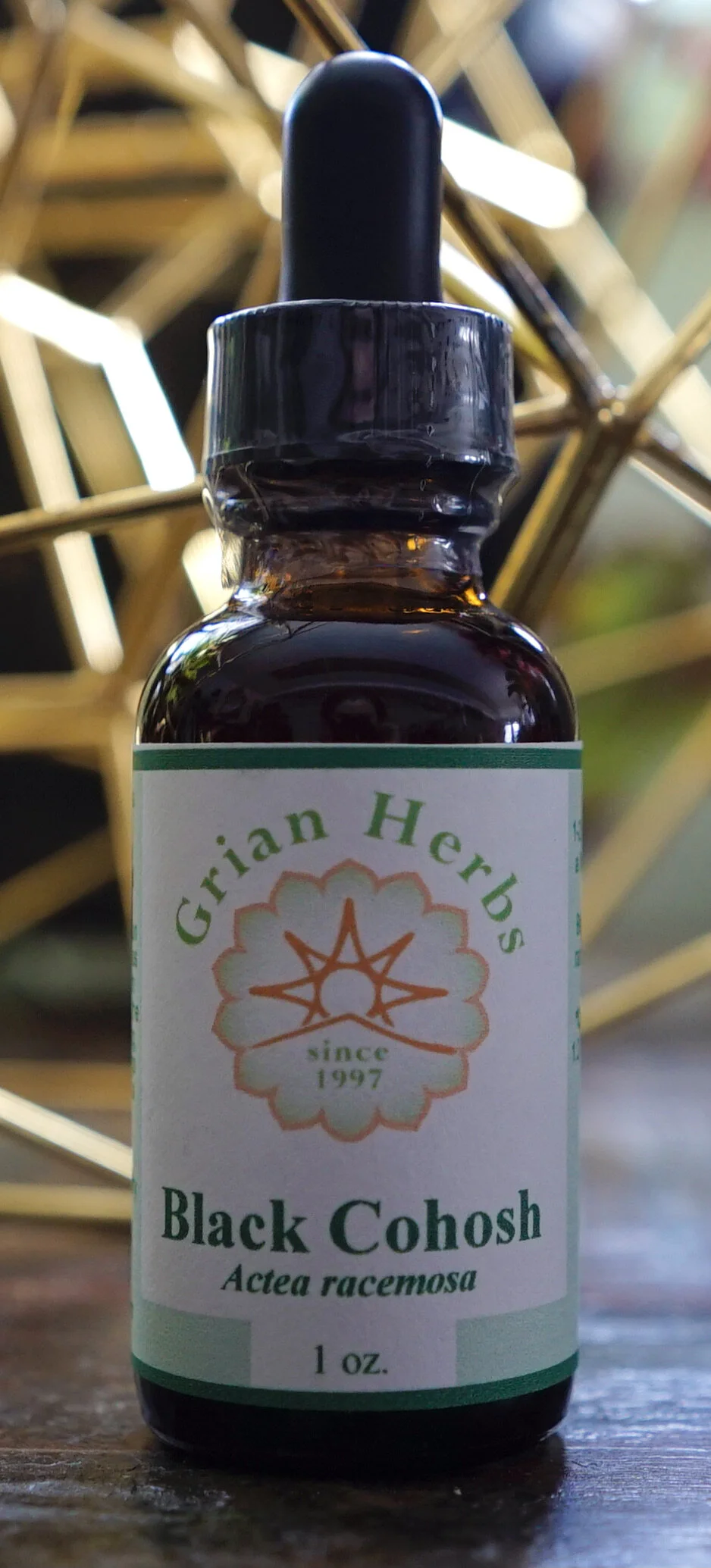Black Cohosh (Actea Racemosa)
Black Cohosh (Actea Racemosa)
A strikingly beautiful woodland native, this plant is a member of the Ranunculaceae, or Buttercup family. Older specimens flower in a long raceme, which can reach 7 feet in height, during the month of July. Seeds mature through August and September, and after the entire flowering stalk has turned black and the seeds are dry, the gnarled root is harvested for medicine. Black Cohosh benefits from very rich, well drained and well mulched soil. It is native to shady spots, but older plants do quite well even in full sun.
Elemental associations: Earth
Phytochemistry: Triterpines and triterpine glycosides, alkaloids, phenolic propane derivatives
Actions: Anti-inflammatory, anti-rheumatic, uterine anti-spasmodic
Specific systems: Women’s reproductive
Recently, Black Cohosh has made news in helping to aid hot flashes, reducing this uncomfortable symptom that can accompany menopause. It is quite helpful in that regard, taken on an ongoing basis as an extract. While some have called this herb ‘estrogenic’, this is actually a misnomer – some of its constituents do bind to estrogen receptors, signaling a reduction in the production of stimulant hormones, but no actual ‘estrogen’ is contained within the plant.
Its uterine relaxant power makes it a helpful addition to formulas designed to aid in painful menstruation.
Traditionally, Black Cohosh has had a wider spectrum of use, principally based on its potent systemic anti-inflammatory action. It has been used for rheumatic complaints, and more recently for other generalized inflammatory conditions such as multiple sclerosis. It seems to have an affinity to ‘darker’, more introspective personalities, often with a depressive component.
Finally, there is anecdotal evidence claiming its effectiveness against the inflammation associated with whiplash.
Indications: Hot flashes associated with menopause. Pre-menstruation and menstrual cramping. Rheumatoid arthritis. Whiplash.
Contraindications: Pregnancy.
Preparation/Dosage: Usually taken as a tincture. Use the fresh root, in 60% alcohol, 1:3 to 1:5. Take ¼ tsp. 2-3 times daily.
Size: 1 fl oz

